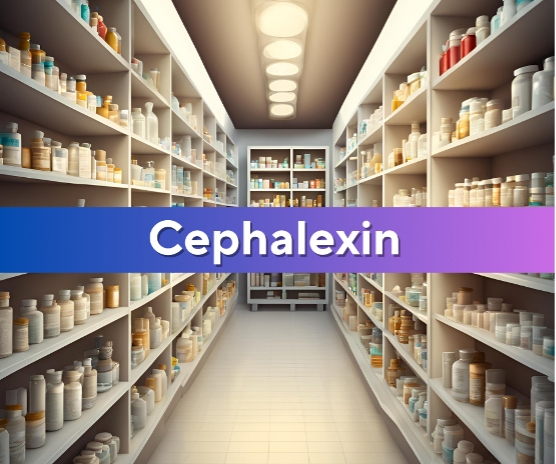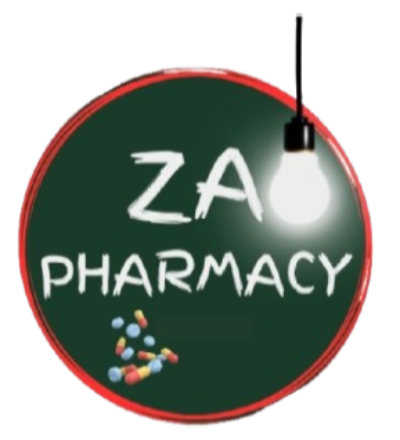Za Pharmacy
Drugs, Supplies and Delivery
Cephalexin
Cephalexin is a first-generation cephalosporin antibiotic widely used for treating a variety of bacterial infections. It is valued for its effectiveness against Gram-positive bacteria and some Gram-negative organisms, as well as its availability in oral formulations. This article references the British National Formulary (BNF), Lippincott Textbook of Pharmacology, and Lange Basic & Clinical Pharmacology to provide a detailed overview of cephalexin, including its mechanism of action, clinical uses, dosing guidelines, side effects, precautions, drug interactions, and generic names.
Cephalexin exerts its bactericidal effect by inhibiting bacterial cell wall synthesis. According to the Lippincott Textbook of Pharmacology, cephalexin binds to penicillin-binding proteins (PBPs) on the bacterial cell wall, disrupting peptidoglycan cross-linking. This weakens the cell wall, leading to osmotic instability and cell lysis.
The Lange Basic & Clinical Pharmacology highlights cephalexin’s activity against Gram-positive bacteria, including beta-lactamase-producing strains of Staphylococcus aureus. However, it is less effective against Gram-negative bacteria compared to later-generation cephalosporins.
Cephalexin is indicated for:
- Respiratory Tract Infections:
- Pharyngitis, tonsillitis.
- Mild community-acquired pneumonia.
- Skin and Soft Tissue Infections:
- Cellulitis, impetigo, and wound infections.
- Urinary Tract Infections (UTIs):
- Uncomplicated cystitis.
- Bone and Joint Infections:
- Osteomyelitis (as part of combination therapy).
- Otitis Media: Middle ear infections (in children).
The BNF emphasizes its role as a first-line agent for mild to moderate infections caused by susceptible organisms.
Dosing varies by infection severity, patient age, and renal function:
Adults:
- Mild to Moderate Infections: 250–500 mg every 6 hours or 500 mg every 12 hours.
- Severe Infections: 1 g every 6–12 hours.
Children:
- 25–50 mg/kg/day in divided doses every 6–12 hours (max 4 g/day).
Renal Impairment:
- Creatinine Clearance (CrCl) 10–50 mL/min: Reduce dose frequency to every 8–12 hours.
- CrCl <10 mL/min: Reduce dose frequency to every 12–24 hours.
Administration Tips:
- Take with or without food.
- Shake the oral suspension well before use.
Cephalexin is generally well-tolerated, but potential side effects include:
- Common:
- Gastrointestinal disturbances (nausea, diarrhea, abdominal pain).
- Rash or pruritus.
- Serious (Rare):
- Hypersensitivity reactions (anaphylaxis, Stevens-Johnson syndrome).
- Clostridioides difficile-associated diarrhea (CDAD).
- Hematologic effects (neutropenia, thrombocytopenia).
- Contraindications: Hypersensitivity to cephalosporins or severe beta-lactam allergy.
- Renal Impairment: Dose adjustment is critical to avoid toxicity.
- Pregnancy and Lactation: Generally safe but use only if benefits outweigh risks.
- Cross-Reactivity: Low risk of cross-reactivity with penicillins (<1%), but caution is advised.
Key interactions per the BNF and Lange Basic & Clinical Pharmacology:
- Probenecid: Reduces renal excretion, increasing cephalexin levels (avoid concurrent use).
- Oral Anticoagulants (e.g., warfarin): Enhanced anticoagulant effect (monitor INR).
- Metformin: May increase metformin levels (monitor blood glucose).
- Generic: Cephalexin monohydrate.
- Brand Names: Keflex®, Ceporex®.

